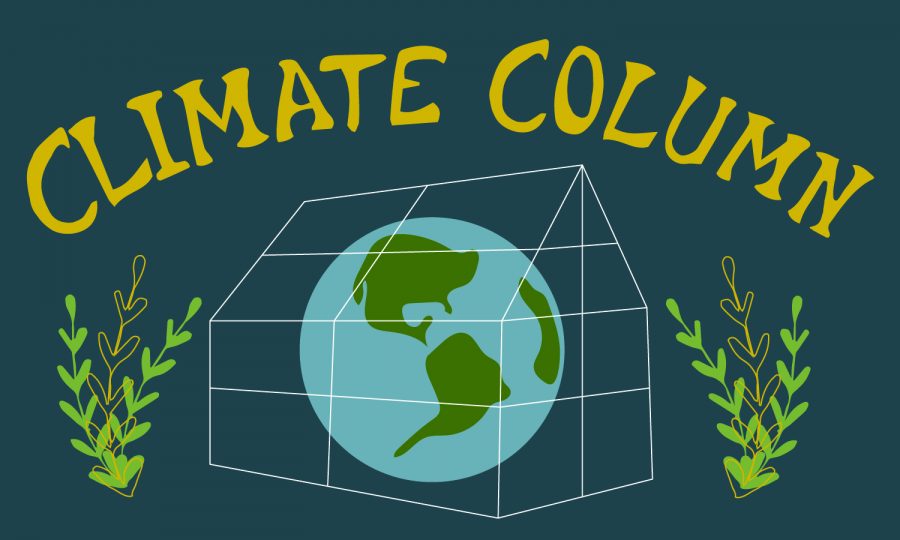Tusinski: Climate change is on Colorado’s doorstep; we don’t seem to care
Despite mounting evidence that Colorado’s climate is in its worst shape in over a millennium, our elected officials couldn’t seem to care less.
April 5, 2022
Editor’s Note: All opinion section content reflects the views of the individual author only and does not represent a stance taken by The Collegian or its editorial board.
In the summer of 2020, the skies above Fort Collins were filled with dark gray ash. The mountains to the west were illuminated by the orange glow of the massive Cameron Peak Fire, which scorched over 200,000 acres of land over the course of roughly four months, making it the biggest wildfire in Colorado’s history.
The Cameron Peak Fire was both one of a long series of increasingly destructive wildfires that occurred in the summer of 2020 and a harbinger of an unfortunate new reality: The climate crisis is no longer a far-off possibility we have time to prevent.
It was here, it was wreaking an unimaginable amount of havoc and our elected officials couldn’t be bothered to prevent future crises of similar scale.
2020 also brought the East Troublesome Fire, which threatened much of Grand Lake, Colorado, scorched hundreds of homes, forced tens of thousands to evacuate and burned just over 10% of Rocky Mountain National Park. In terms of sheer destruction and human impact, the East Troublesome Fire was among the worst in Colorado’s history — at least at the time.
“These recent wildfires have prompted a reckoning among Coloradans. Officials in the state have declared fire season is now year-round.”
Perhaps the most visible and recent example of the destructive nature of Colorado’s wildfires was the Marshall Fire in Superior, Louisville and unincorporated Boulder County. Despite only burning a relatively small 6,000 acres, the fire was Colorado’s most destructive in terms of homes being destroyed.
A few months later, a fire started at the National Center for Atmospheric Research. Despite its less destructive impact, the fire occurred in March, illustrating that wildfires can now happen outside of the standard wildfire season.
Colorado’s wildfires are often broken into epochs, meaning that there are different periods in state history that each include dozens of individual fires. According to analysis from the Colorado Sun, the year of 2020 alone could be considered its own wildfire epoch. The year saw the most wildfire damage in Colorado’s history, with the state’s three largest wildfires of all time occurring in 2020.
These recent wildfires have prompted a reckoning among Coloradans. Officials in the state have declared fire season is now year-round.
There’s a growing consensus that Colorado’s wildfires are being directly caused by climate change. Colorado — and much of the Western U.S. — has recently been embroiled in a “megadrought” that has dried soil, brought record-breaking heat and sunk rivers to some of their lowest recorded levels. The result: Colorado’s worst drought stretch in over 1,200 years.
Despite clear evidence that Colorado’s climate is in a historically bad state, our elected officials couldn’t seem to care less. Fracking, a practice known to contribute to the massive amounts of methane in our atmosphere, has seen a recent boom in Colorado. Oil producers in Colorado now hold nearly 3,000 approved drilling permits.
“There are two clear trends in Colorado: Climate change has arrived, and even our most ‘progressive’ politicians are only worsening the problem.”
The lack of care for the environment is a trend that is rampant in Colorado politics.
Oil and gas corporations are mounting a statewide astroturfing campaign to encourage voters to approve even more natural gas usage. State lawmakers have sidelined legislation that would’ve implemented greenhouse gas restrictions on large manufacturers until 2023.
Keep in mind that that’s just on the legislative side. Perhaps the biggest example of Colorado’s climate carelessness is Gov. Jared Polis, who is currently campaigning for reelection.
When he was first elected in 2019, Polis campaigned on a promise to move Colorado toward 100% sustainable energy use within 20 years. His actions since arriving in office have done almost nothing but contradict this hollow, green-washed campaign messaging.
Even before he was elected, Polis vowed his support for the harmful practice of fracking. After his election, Polis further caved to the interests of oil and gas companies and threatened to veto a bill aiming to curb greenhouse gas emissions.
Even more recently, Polis announced that he’s delaying his plan to cut emissions from commercial trucks, sparking outrage among environmentalists statewide.
The main points to take away from this are there are two clear trends in Colorado: Climate change has arrived, and even our most “progressive” politicians are only worsening the problem. Polis and most of our elected representatives are up for reelection this November, so please make sure you keep their climate policies in mind when you fill out your ballot.
Reach Dylan Tusinski at letters@collegian.com or on Twitter @unwashedtiedye.






Mike • Apr 6, 2022 at 6:13 pm
Luv, luv, luv the graphic at the top of the story. Should have national/international exposure.